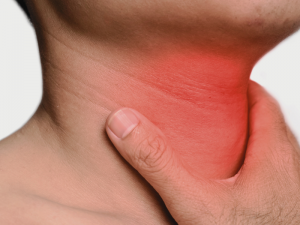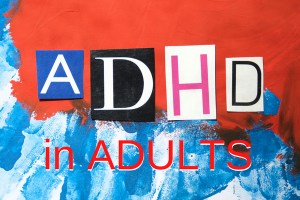While many people, especially those in the corporate world, have heard the word “burnout”, it’s not recognised officially as a medical term. If you read my musings regularly, you know that education and myth-busting are my primary passions inside and outside of my treatment space.
In healthcare, burnout is called mental exhaustion or mental fatigue; “it is a state of emotional, physical, and mental exhaustion induced by long-term, unresolved or excessive stress.”

Here’s the backstory
The psychologist Herbert Freudenberger coined the term “burnout” in 1974; he used it to define a “state of mental and physical exhaustion caused by one’s professional life”.
Along with his colleague Gail North, Freudenberger created a list of the phases of burnout.
- The Compulsion to prove oneself
- Working harder
- Neglecting their needs
- Displacement of conflicts
- Revision of values
- Denial of emerging problems
- Social withdrawal
- Odd behavioural changes
- Depersonalisation
- Inner emptiness
- Depression
- Burnout syndrome
Nowadays, most specialists agree it (burnout) can affect anyone from; overworked employees, students, carers, and parents. However, experts disagree on the diagnostic criteria which have consequences because recording the incidence is impossible.
In 2019 the world health organisation (WHO) classified burnout as an “occupational phenomenon”, not a medical condition, arising from “poorly managed chronic workplace stress”.Their statement was clear: burnout refers explicitly to a workplace context and should not apply to describe experiences in other areas of life.
Confused? Me too, life is rarely that simple or compartmentalised; personal concerns may cause workplace stress, and low-pressure jobs can burn folks out.
While not considered a mental illness, burnout can be viewed as a mental health issue because the signs, symptoms, and behaviours overlap.
Loss characterises burnout
-
- Energy
- Focus
- Enthusiasm
- Self-confidence
- Capacity
- Ability
- Joy
Causes and risk factors
While the triggers aren’t the same for everyone, some are more common than others.
-
- Working long hours
- Financial Pressure
- Job dissatisfaction
- Being a carer
- Living with a chronic health condition or illness
- The death of a loved one
- Having a baby
- Poor work-life balance
- Being in a front line or high-pressure occupation.
- Lack of support (work or personal life)
Some professionals consider burnout a syndrome and a work-related nervous breakdown because the symptoms include three key signs that mirror what anyone experiencing a nervous breakdown of any type goes through:
- Extreme exhaustion
- Poor performance
- Feeling depersonalised or alienation.
Those affected describe feeling worthless and emotionally drained, often struggling with an array of physical symptoms too. All of which can make responsibilities and challenges of daily life seem impossible.
Signs and symptoms
Pressure and stress are everywhere; the symptoms range from mild to worrying. Not all of them are bad; avoiding slipping into the most severe stages of burnout requires noticing and taking action to the early and often subtle signs of stress rather than dismissing them as an unavoidable part of 21C life.
Mental exhaustion/burnout causes various physical and emotional symptoms, which usually begin gradually, creeping up and impacting behaviour; the most apparent negative changes are a lack of focus, decreased work performance, poor concentration and attention, or failing memory.
It can cause reduced self-confidence, low mood, anxiety, and social withdrawal, often becoming a vicious, misunderstood cycle. Others may report these changes before those affected notice in themselves, which can add to their sense of isolation.
Most people edging into burnout report feeling trapped in their situation and cannot see solutions because the ability to think with any clarity is compromised by exhaustion and overwhelm.

Summary of S&S
- Out of touch with your feelings and emotions
- Difficulty concentrating
- Lack of motivation
- Feelings of dread or hopelessness
- Cynicism or pessimism
- Apathy
- Detachment
- Unexplained anger
- Poor performance at work
- Out of character for you
Side note: It’s essential to recognise that these signs and symptoms could also indicate another health condition, so please seek qualified medical advice.
Stages to burnout
While Freudenberger and North developed a 12 stage model, many others have been evolved since the 1970s. Let’s keep it simple and explore the 5 stage model; where are you on this scale?
The good stress, aka honeymoon phase, –helps us get things done – enthusiastically sparking creativity, accepting and meeting deadlines and commitments.
The onset of di-stress, – this second stage begins with an awareness of some days being more difficult than others and an inability to switch off.
Chronic stress, – a marked change in stress levels, going from motivation and getting things done to more frequent, more intense struggle or distress. Neglecting needs, more conflict in this stage, people often report feeling threatened, panicky, and jittery.

Burnout, – symptoms have become critical; continuing, as usual, is often not possible in this state. It’s increasingly difficult to cope. People may notice an inner emptiness and often feel their future is bleak. Common symptoms include deep sadness, mental and physical fatigue, aches and pains, and low mood. People may be seeking more of their preferred self-soothing behaviours; alcohol, drugs, food, sex, shopping, gambling. Those who seek help at this stage may be diagnosed with anxiety and depression; they are associated will most, if not all, mental health issues. “This state of unrelenting fatigue can leave people physically drained”, making even simple tasks such as getting dressed feel more physically demanding.
Habitual or Burnout Syndrome, – In this final stage, symptoms are so embedded that people are affected are likely to experience significant ongoing mental, physical, or emotional problems, which can include total mental and physical collapse, requiring urgent medical attention.

Getting help
Recovery from burnout requires a multidisciplinary approach, which should, in my opinion, start with education. My patients and students tell me that information helps, so I hope this is useful to you too.
- There is no universal strategy, I hear you groan, but this is excellent news because it means you have choices.
- Regardless of the science, research, and evidence, the best management and treatment for you is the one that works–for you.
- However, anyone with suspected burnout or mental exhaustion, or mental fatigue needs to be assessed by a qualified health professional.
Advice: recovery takes time, one step at a time, is the best approach.
Medical treatment:
Talk with your doctor. Seeking professional help for mental exhaustion is essential; speak to your doctor as investigations may be needed to rule out other health concerns. While some doctors will suggest the short-term use of medications such as antidepressants, anti-anxiety medications, and sleep aids, and these can be useful remember your consultation is a collaboration, you have choices. Your doctor is also the gatekeeper for getting more support or extended leave from work.

Work with an experienced certified talking therapist.
Bodywork treatment, as an osteopath, I’m going to recommend its gentle therapeutic approaches, but any hands-on treatment of your choice can help calm the body and ease the physical symptoms, including aches and pains.
In the workplace
-
- If you an employee utilise occupational health.
- If you are a leader/manager/boss, invest in workplace wellbeing and set the tone for positive change;
- Devise a mental health policy and action plan
- Publicise your commitment to mental wellbeing
- Remove stigma by creating a culture of openness.
- Remind all employees that wellness is a shared responsibility.
- Encourage access to health and support services.
- Identify the possible stressors in the workplace and where improvements are needed.
- Praise and reward employee performance
- Encourage self-help strategies; problems can develop outside and inside the workplace that can negatively impact mental health and make it harder for people to cope.

Self-help; rest, reflection, and recovery
Lifestyle changes and techniques to use at home or work can help you cope and alleviate symptoms.
Identify and remove the stressor: it’s not always possible to eliminate your stress source (you can’t kill your boss or partner), but identifying your stressor is essential to create a meaningful way forward.
Ask for help: – if you’re overwhelmed by work or personal responsibilities, consider delegating, not just for a day or two but for a few weeks. Extended work leave may be needed. For those who are self-employed contract workers, clearing your schedule so that working days are shorter and you have good days off! Yes, I know!
Relaxation techniques: – are scientifically understood to lower stress and anxiety if practised regularly – work out which one works for you. Mini breaks are powerful for resetting the body and mind, plus taking proper breaks, lunch?
Learn the art of proper rest: Rest to recharging is essential in treating mental exhaustion/burnout.
Quality sleep: – enough said, but not easy. The human brain is a hungry organ; it uses 20% of our energy awake or alive but needs regular rest periods to restore and maintain optimal function; this includes mastering sleep; this research science and ancient wisdom tell us about sleep.

Our brain benefits most from maintaining consistent sleep and wake times, and it needs to unwind to hack quality sleep; the following seems to help most people.
-
- A dark, cool sleep space and a warm cosy bed
- Avoid blue light 90 minutes before bed, it can interfere with the release of the sleep hormone melatonin. Disengage from your phone an hour before bed can be helpful, or wear blue light blocking glasses.
- Stimulants such as alcohol and caffeine can significantly impact sleep quality and cause 3.00 am waking. Are you consuming too much?
Movement and exercise: – while it may seem like a massive challenge if you feel overwhelmed, lack energy, are time poor, feel unmotivated. When we exercise, the stress hormone Cortisol is lowered, and endorphins are released, the brilliant chemicals which boost mood and act as natural painkillers.
-
- Start small and gently; A 10-15 minute daily, eventually working up to a brisk walk.

Eat a well-balanced diet:- top up with supplements if needed. In an ideal world, we would feed our brains a daily diet with mind nutrient-rich foods: a rainbow of foods: green leafy vegetables, fruits, especially berries, legumes, nuts, seeds, and grains. Plus, protein from eggs, dairy, oily fish, lean meats, and good fats.
Sugar and stimulants: The more time we spend outside our normal blood sugar range, the more stressed our internal body will be. However, here’s the problem; chronic stress affects the balance of the hormones that aid satiety and blood sugar balance; insulin and leptin are disturbed when we feel stressed, which explains why some folks lose their appetite or under-eat, while others are in constant hunger. HANGRY! Every time they perceive stress, they need to reach for a snack, alcoholic drink to self-soothe or seek other behaviours, gambling, shopping, recreational drugs, sex.

Hydration: Did you know that your concentration and memory will be affected if your brain is as little as 2% dehydrated? By the time you notice thirst, you are probably more dehydrated. More thirst is often confused with hunger. Studies have shown our fluid needs depend on many factors, sex/gender, health status, activity level, the climate (external and internal) where folks live.
The standard daily fluid recommendations of 2.5 -3.7 litres include fluids from food, beverages, and water, but when you add caffeine and alcohol, which dehydrates, we need to top up with water or water-rich foods. No single formula fits all; knowing more about your body’s need for fluids will help you estimate how much water to drink each day.
Your fluid intake is probably adequate if: you rarely feel thirsty and your urine is colourless or pale yellow.
Breathwork: – slow, deep breathing is a simple yet powerful relaxation technique to quiet the mind. It triggers the body’s relaxation response (read more here), calming the nervous system, lowering blood pressure and heart rate.
-
- It’s easy to learn and can be practised almost anywhere and provides a quick way to get your stress levels in check.
- Deep breathing is the cornerstone of many mind-body practices, easily combined with other relaxing elements such as aromatherapy and music, to personalise your recipe for stress management.
- All you need is a few minutes and a quiet place to sit or stretch out.
Journalling: – some people find writing or drawing can help focus on the good things in their life; if you like it great, grab a pencil and notebook; otherwise, find something else.
Explore your creativity: – art, craft, dance. Learn a new skill. Or take up a hobby or learn to play an instrument.
Be more mindful: Mindfulness and meditation are tools to transform the mind and build resilience, and while there are forms we can all do naturally, for example, gazing into an open fire or looking out of a train window, it’s more beneficial if we make time to practice daily, but classic mindfulness and meditation technique are not for everyone. If you can’t sit comfortably still (for whatever reason) or find the ‘zen zone’, you’ll simply add to your sense of failure (you’re not and not alone either), so look at other options.
-
- Walking meditation
- Hand movement meditation- art, craft, knitting, palm stone, are all mediative; it no surprise that the craft of crochet was the lockdown savour for many people.
- Tai Chi or Qigong
Resilience
“The ability to bounce back from illness, setbacks or adversity, its an essential to flourish and thrive.”
Some people are born with it [resilience] in abundance, but we can increase it. There are 5 recognised steps to improving mental health, wellbeing, and increasing resilience.
-
- Connection with other people
- Activity – a movement or exercise practice
- Learning new skills
- Giving to others
- Paying attention to the present moment/ be mindful
Summary
Burnout/mental exhaustion can creep up anyone but is treatable and curable with an easier recovery if caught early. So don’t shrug off early warning signs of ongoing stress just because it may seem mild or familiar; we all know that far more significant obstacles and life events are always lurking around the corner.
Final words
Take your recovery one step at a time; it easy to fall into a deeper place of overwhelm by the plethora of options available and quick fix options offered.
It probably took you a long time to notice and take action of your exhaustion; in addition to whatever help you choose, your mind and body need time and rest to recover. There is no quick fix to recovery from mental fatigue, but recognition is the first step which from personal experience is a vast empowering step forward.









